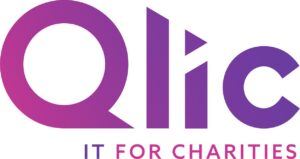A digital strategy is the foundation of any successful charity looking to thrive in today’s market. A testament to this is that despite the increase in the cost of living crisis, 41% of charities have still expressed the desire to develop a digital strategy. As they should! A digital strategy can help charities reduce costs, engage supporters and maximise fundraising potential.
But what exactly is a digital strategy in the charity sector? And how can charities go about creating one? Read on to find out our 5 top tips for any charity looking to get started with their digital transformation journey.
What is a Digital Strategy?
In the digital landscape, where technology is constantly adapting, charities must acclimate and evolve to make the most of the opportunities available to their organisation. A well-thought-out digital strategy can act as the compass that guides a charity towards its ultimate objectives and goals. It can also ultimately bring about digital transformation for charities.
A digital strategy for charities is a plan on how your organisation can leverage and use digital channels, tools, and techniques to achieve its mission and goals. By harnessing the power of technology, your organisation can improve operations, increase donor engagement, raise funds, and extend awareness.
The impact of the cost of living crisis on strategy development
While having a digital strategy can be hugely beneficial to charities, The Charity Digital Skills Report 2023 found that the cost of living crisis was having a negative impact on charity’s investment in digital. Charity Digital found that 3 out of 10 charities were spending less money on digital tools, 17% spending less on upskilling staff and volunteers and another 10% shelving internal digital projects.
So far in 2023, only 48% of charities reported having a digital strategy, which is a drop from 56% in 2022. However, it is exactly a digital strategy that can help charities in these difficult times. In fact, digital transformation and the use of technology can be a cost saving solution during hard times.
In our webinar “Cost-of-Living Crisis Tech Tips” we discuss this with our Director Adam Graham who has been at the forefront of leading charity digital strategies for our clients.
There is no doubt that the cost of living crisis has increased financial pressures on non-profit organisations. And, technology can be leveraged to reduce costs, provide economic relief while engaging supporters and maximise fundraising potential. One example is including Microsoft 365 for charity as a cost-effective cloud solution in your strategy.
Essential elements of a digital strategy every charity should follow
Every charity’s digital strategy will be different. After all no charity is the same. They defer on size, service, team and many other elements. The strategy needs to take into consideration these differences and be built to fit. However, there are essential steps every charity should follow when creating a digital strategy, these are:
- Define your charity’s objectives
- Understand your service users
- Audit digital resources
- Design an implementation plan
- Stay agile
Let’s dive into each.
1. Defining Your Charity’s Objectives
Before starting your charity’s digital strategy, it is crucial to understand your organisation’s objectives. Digital should be a method of serving the delivery of an organisation’s goals and objectives, so it’s important that they are aligned.
Firstly, assess where your charity currently is and where you would like it to be in terms of organisational strategy. Simply take each of the components in your organisational strategy and ask yourself where digital could come in to help facilitate and improve things. This will then help identify specific objectives for your charity.
Use SMART objectives (Specific, Measurable, Achievable, Relevant, Time-bound) as a template to define actionable goals. For example, one SMART objective for a charity might be to increase its social media following on Facebook and Instagram by 10% by the end of the quarter. They can use analytics tools to measure and track follower count growth. The next stage would be to map out how you’re going to achieve this objective. In this case, you could implement a consistent posting schedule and invest in social media advertising.
It’s also important to set a time frame for when you’re likely to achieve the objective. This helps you to stay on track.
2. Understand Your Service Users
Once you’ve established your charity’s objectives, you can then take the next step of understanding your service users. You need to address the charity’s main needs and pain points. This includes the capabilities of service users, both the communities that your nonprofit serves as well as your own staff and volunteers.
By looking into your service users you can pick up on trends such as what digital skills they have. You can also assess how they currently engage with your charity versus how they would like to engage with it. There are a number of ways to research your service users, including conducting surveys and hosting focus groups.

3. What Digital Resources Are Available?
The next stage is to assess which digital resources are available to your organisation. In order to develop an effective digital strategy, it’s necessary to know what digital technology can offer your organisation.
Researching and exploring the wide range of digital tools and platforms available to charities is an important part of the process. We know that this can be a daunting and time-consuming task. But there are several Managed Service Providers, including our team at Qlic, who can help to analyse which digital resources are appropriate for your organisation. If you’d like help identifying what IT and digital services could benefit your charity’s digital strategy, book your free IT consultation with our technical experts here!
One great example of technologies and software that can align with your objectives and budget is Microsoft. Microsoft 365 for charity has a full suite of cloud solutions to help take your organisation to a level of scalability. Microsoft also integrates into existing systems or can be migrated to with ease. It’s no secret that the cloud has emerged as a game-changer for organisations across all industries, including nonprofits. Cloud computing offers cost-effective solutions that can enhance scalability and efficiency.
4. Design and Develop a Comprehensive Implementation Plan
Once you have defined your charity’s objectives, understood your service users and researched which digital tools are available, it’s then time to create and develop a comprehensive implementation plan.
At this stage, it is highly important to put in place a timeline, budget allocation, and clear roles and responsibilities. Your objectives should also be clearly defined within the plan.
Then you can start to map out the introduction and implementation of your chosen digital platforms, services and digital channels. These might include CMS, CRM software, analytics tools etc. The plan should qualify what goal and objectives each of these digital platforms will help to meet, how and when they are to be rolled out, who will be using them and what resources and training is required for their implementation and success.
Check out our Beacon Family Services case study to see how Qlic assisted them with their IT needs. We were there to tackle their IT challenges and put in place a strategic plan to update and simplify their IT infrastructure while providing continuous support services.

5. Be Prepared To Adapt
When implementing a digital strategy for your charity, it is important to be flexible and allow room for testing and learning during the process. Setting Key Performance Indicators (KPIs) and consistently tracking progress throughout the implementation will help to keep your digital strategy on track.
Once the implementation process is underway you can start to analyse data, identify trends, and make informed adjustments to help optimise your strategy. By doing this, you are well on the way to implementing a successful charity digital transformation.
Digital Strategy in the AI Era
As we look at the digital tools available for charities, we can’t ignore AI. Artificial intelligence has advanced rapidly in recent years, transforming technologies across industries. To stay ahead of the curve, charities need to understand AI and how it can be applied. But the universe of AI can seem intricate to navigate. That’s why we created this beginner’s guide to AI for charities.
AI should be part of your charity’s digital strategy. However, it needs to be implemented with care and always driven by ethics as there are risks. Here are 3 ideas where AI can be used ethically to enhance and power up your charity digital transformation:
- Content creation – generative AI models such as ChatGPT can save time and money on creating content charities can use across their website, social media and even grant applications. But make sure you don’t just copy-paste!
- Campaign optimisations – fundraising is the backbone for many charities and levelling up your efforts has never been easier that in the world of AI. Cutting-edge platforms such as Microsoft Copilot can make all the difference for campaign optimisations and wider productivity improvements!
- Cyber security – AI has also expanded into the realm of data and cyber security, offering charities that extra bit of safeguarding that is sorely needed. Just check out tools such as Microsoft Security Copilot!
Closing Remarks on a Charity Digital Strategy
In conclusion, there are a huge number of benefits to having a digital strategy for your charity. Ultimately, it allows charities to formulate the best way to use digital technology to achieve their goals.
Implementing a digital strategy can help a nonprofit transform how it operates, communicates, and delivers. As we continue in this digital age, charities that embrace a digital strategy will be better equipped to adapt, grow, and make a more significant impact on the communities they serve.
Do you need help identifying what IT and digital services could benefit your charity’s digital strategy? Book your FREE IT Consultation now by clicking the button below.






